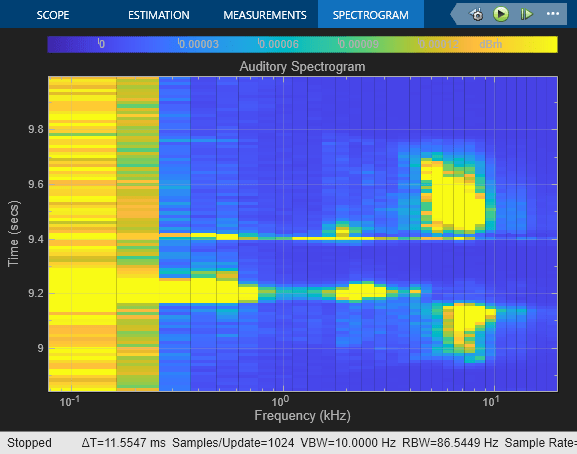Design Auditory Filter Bank
Libraries:
Audio Toolbox /
Features
Description
The Design Auditory Filter Bank block outputs a frequency-domain auditory filter bank. You can use an auditory filter bank to decompose an audio signal into separate frequency bands for feature extraction.
Examples
Ports
Output
Parameters
Block Characteristics
Data Types |
|
Direct Feedthrough |
|
Multidimensional Signals |
|
Variable-Size Signals |
|
Zero-Crossing Detection |
|

